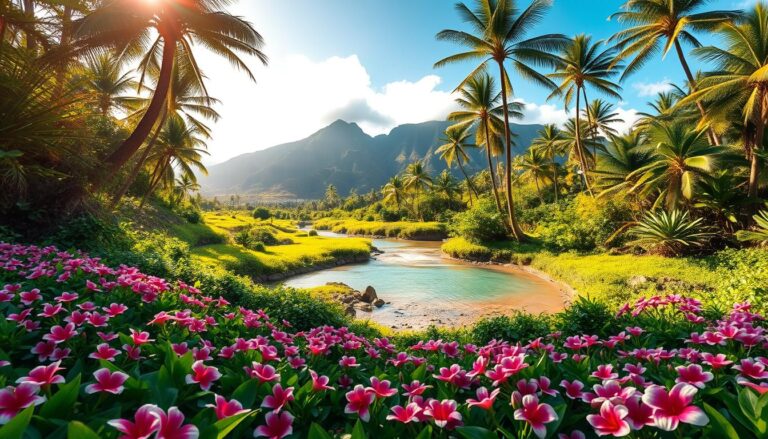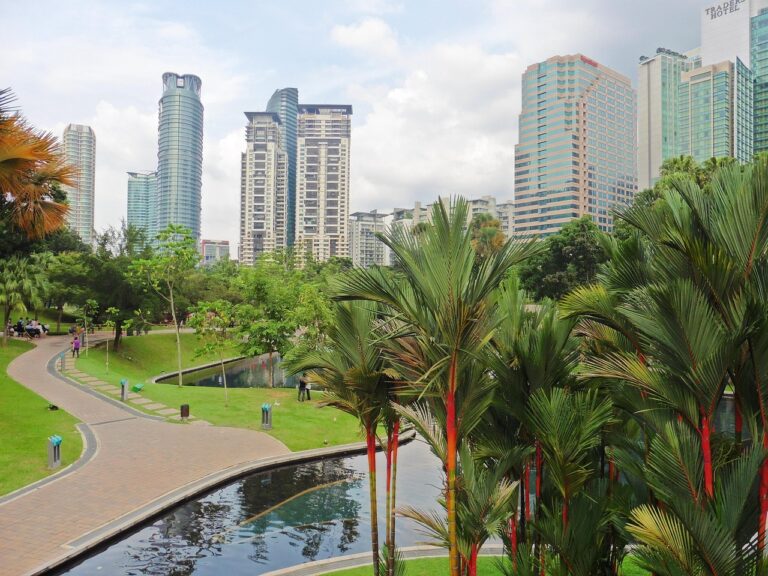Morocco is a land of contrasts—golden deserts, snow-capped mountains, ancient medinas, and Atlantic beaches. From the bustling souks of Marrakech to the tranquil dunes of the Sahara, the country offers diverse experiences all year round. But when is the best time to visit Morocco?
The answer depends on your travel goals—whether you’re hiking in the Atlas Mountains, surfing in Taghazout, exploring imperial cities, or camping under the stars in Merzouga. In this comprehensive guide, we’ll break down the best months to visit Morocco by region and interest, along with expert tips to help you plan the perfect trip.
Table of Contents
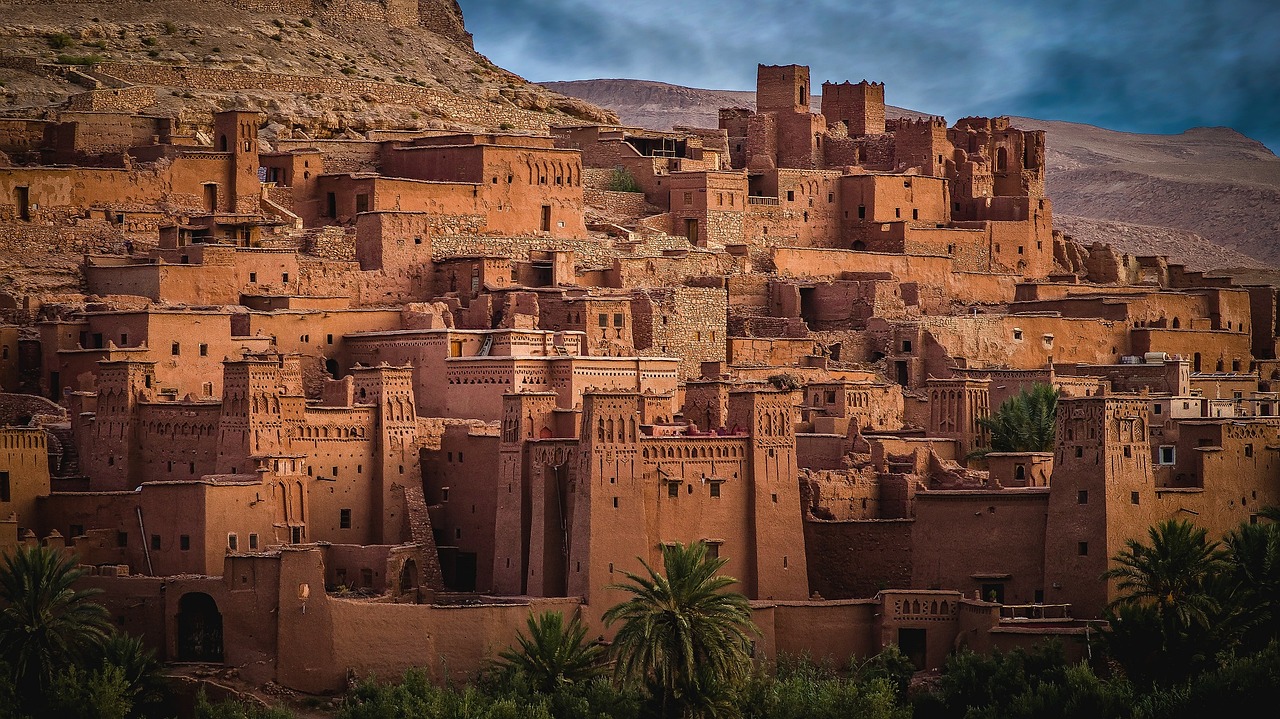
Spring in Morocco (March to May): Best Time to Visit Morocco for Mild Weather and Flowers
Best for: City exploration, trekking, photography, mild weather
Average temperatures: 18°C to 28°C (64°F to 82°F)
Spring is arguably the best season to visit Morocco, especially for first-time travelers. The weather is pleasant throughout the country, with warm days and cool nights. Rain is minimal, and landscapes—from the valleys of the High Atlas to the gardens of Fes—are lush and blooming.
Why Spring Is the Best Time to Visit Morocco?
- Comfortable weather: Ideal for walking tours in cities like Marrakech, Chefchaouen, and Fes.
- Atlas Mountains hiking: Clear skies and moderate temperatures make spring perfect for trekking routes around Imlil and Toubkal.
- Festivals: Don’t miss the Rose Festival in El Kelaa M’Gouna in May, where the blooming rose fields turn the Dades Valley into a fragrant paradise.
Travel tip:
Pack layers. Mornings and evenings can be cool, especially in mountain areas.
Summer in Morocco (June to August)
Best for: Beach holidays, cultural festivals, mountain escapes
Average temperatures: 30°C to 45°C (86°F to 113°F) inland; 22°C to 30°C (72°F to 86°F) on the coast
Moroccan summers can be scorching—especially in cities like Marrakech, Fes, and Ouarzazate, where daytime temperatures often exceed 40°C. But the Atlantic Coast and the Middle Atlas offer welcome relief.
Best Time to Visit Morocco for Surfing and Coastal Breezes
- Essaouira and Agadir: Enjoy ocean breezes, water sports, and fresh seafood.
- Taghazout: A haven for surfers, even in the hotter months.
- Ifrane and Azrou (Middle Atlas): A cool mountain escape with alpine vibes.
- Sahara Desert: Despite the heat, early morning and evening camel rides in Merzouga or Zagora are unforgettable.
Events & festivals:
- Gnaoua World Music Festival in Essaouira (usually June): A major cultural event attracting global artists and travelers.
Travel tip:
Book air-conditioned accommodations and plan outdoor activities for early mornings or late afternoons.
Autumn in Morocco (September to November):
Best for: Desert trips, cultural travel, hiking, food experiences
Average temperatures: 20°C to 30°C (68°F to 86°F)
Autumn is another ideal time to visit Morocco. The summer heat begins to fade, making it comfortable to explore the Sahara, wander through imperial cities, and trek through valleys and oases.
Highlights of Morocco in fall:
- Sahara tours: Cooler nights and more tolerable daytime temps make camel trekking and desert glamping perfect during this season.
- Cultural immersion: Visit the UNESCO-listed cities of Meknes, Fes, and Rabat without the summer crowds.
- Harvest season: Enjoy fresh dates, figs, pomegranates, and olives during autumn—Morocco’s markets are bursting with color and flavor.
Travel tip:
This is peak season for desert tours, so book ahead for popular destinations like Merzouga or Skoura.
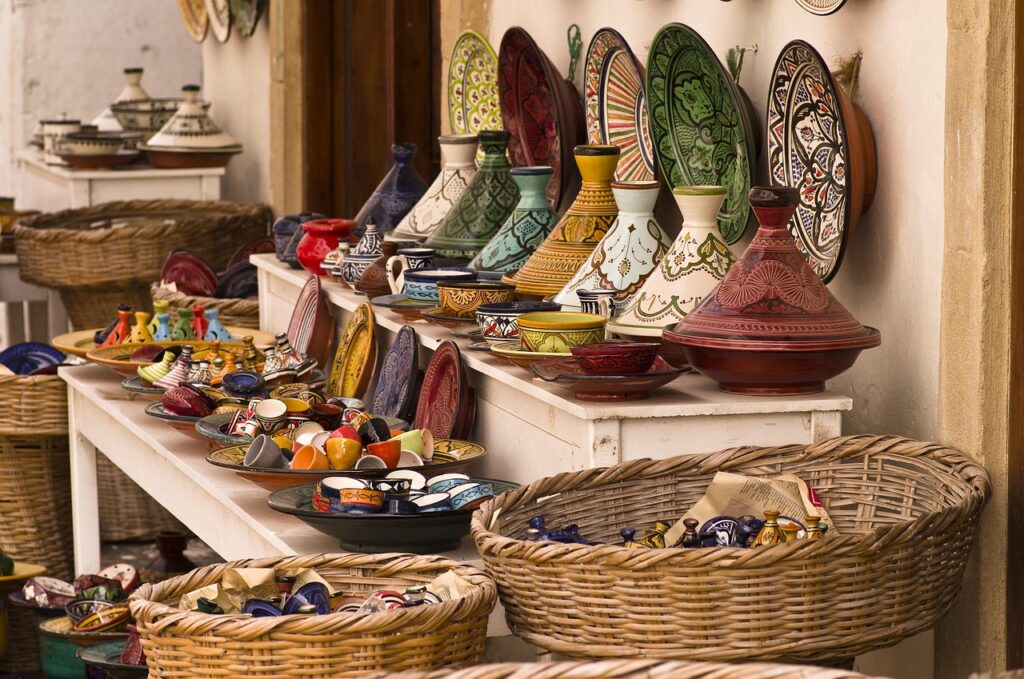
Winter in Morocco (December to February)
Best for: Snow sports, low-season travel, photography, city visits
Average temperatures: 5°C to 20°C (41°F to 68°F), depending on altitude and location
Moroccan winters are mild in the coastal and southern regions but can be quite cold in the mountains and desert at night. It’s a great time to visit if you prefer fewer tourists and lower prices, or if you’re interested in snow sports.
Why Winter Is the Best Time to Visit Morocco?
- Skiing in the Atlas Mountains: Resorts like Oukaïmeden (near Marrakech) offer skiing and snowboarding with scenic views.
- Peaceful cities: Explore Marrakech, Casablanca, and Fes without the heat or crowds.
- Sahara Desert: Though chilly at night, winter brings crystal-clear skies and stunning sunrise views over the dunes.
Travel tip:
Pack a good jacket. Temperatures in the desert and mountains can dip below freezing at night.
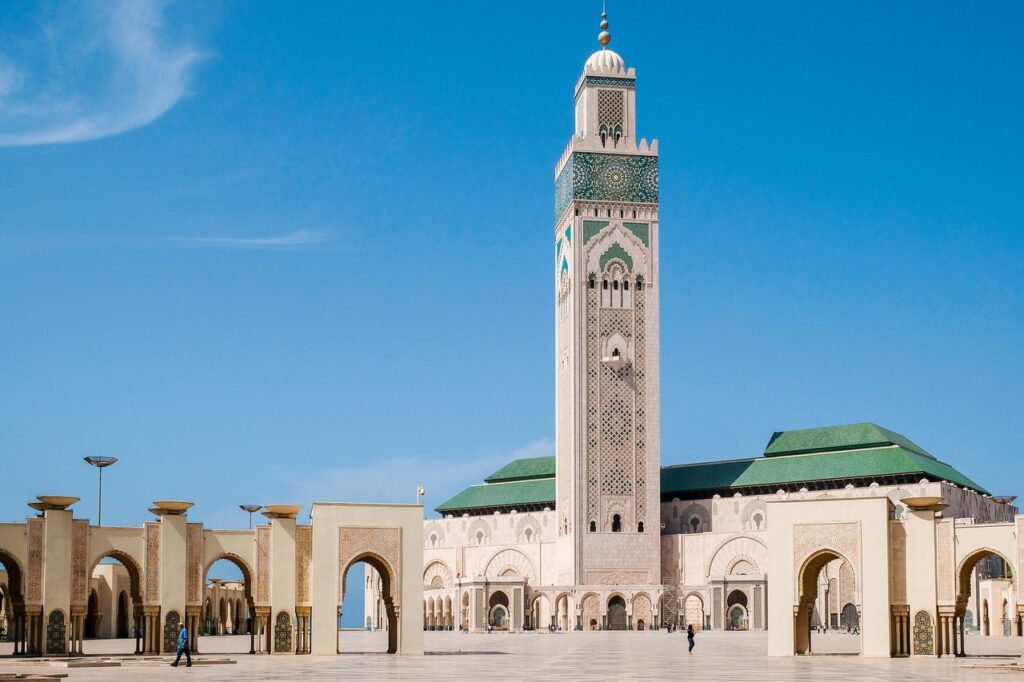
Best Time to Visit Morocco by Region
1. Marrakech
- Best time: March–May, September–November
- Avoid: July and August unless you’re okay with extreme heat
- Top attractions: Jemaa el-Fna square, Majorelle Garden, Bahia Palace
2. Fes
- Best time: Spring and fall
- Highlights: The ancient medina, leather tanneries, Al Quaraouiyine University
3. Sahara Desert (Merzouga & Zagora)
- Best time: October–April
- Avoid: Peak summer months unless tours are timed for sunrise/sunset
- Activities: Camel trekking, stargazing, 4×4 adventures
4. Atlas Mountains (High & Middle)
- Best time: Spring (April–May) and fall (September–October)
- Winter activities: Skiing in Oukaïmeden, snow hikes in Toubkal National Park
5. Atlantic Coast (Essaouira, Agadir, Taghazout)
- Best time: June–September
- Ideal for: Surfing, beach relaxation, seafood dining
Month-by-Month: Best Time to Visit Morocco Based on Your Interests
| Month | Weather & Highlights |
|---|---|
| January | Cool and calm, best for skiing and city breaks |
| February | Desert trips, low season for urban exploration |
| March | Blooming landscapes, great for hiking and photography |
| April | Excellent weather across most regions |
| May | Rose Festival, great time to visit imperial cities |
| June | Warm to hot, start of music festival season |
| July | Very hot inland; best to stick to the coast |
| August | Peak beach season, surf towns are lively |
| September | Cooler evenings, ideal for desert and trekking |
| October | Top month for diverse travel across Morocco |
| November | Pleasant temps, perfect for cultural and food tours |
| December | Quiet season, desert beauty, and snow-capped peaks |
Factors to Consider When Choosing the Best Time to Visit Morocco
✅ Weather
Morocco’s climate varies greatly by region. Always check forecasts if planning hikes or desert tours.
✅ Crowd Levels
Spring and fall are peak seasons. If you prefer quiet experiences, winter or early summer may suit you better.
✅ Budget
Low season (January–February, late June–August) often means better deals on flights and hotels.
✅ Festivals and Events
Morocco has a rich calendar of religious and cultural events:
- Ramadan: Dates shift yearly. Tourist services may be limited.
- Mawazine Festival: Held in Rabat (usually in May/June), with international music performances.
- Eid al-Adha: A major Islamic holiday—some services may close briefly.
Travel Tips for Visiting Morocco
- Dress Appropriately: Morocco is a conservative country. Light, loose-fitting clothes that cover shoulders and knees are ideal.
- Stay Hydrated: Especially in summer. Always carry a reusable water bottle.
- Plan Early: For popular periods like April, May, and October, book your accommodations and tours well in advance.
- Learn Key Phrases: Arabic and French are widely spoken. Learning basic greetings enhances your experience.
- Use Local Guides: Hiring certified local guides in cities or the desert enriches your cultural understanding.
Final Thoughts: When Is the Best Time to Visit Morocco?
The best time to visit Morocco is generally spring (March–May) and autumn (September–November). These seasons offer the best weather, lush landscapes, and comfortable conditions for exploring cities, mountains, and deserts alike.
But ultimately, Morocco is a year-round destination. Whether you’re looking for snowy adventures, desert silence, festival vibes, or beach relaxation, there’s always something magical waiting—whatever the season.

